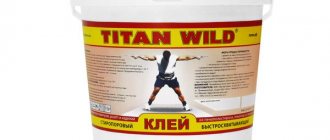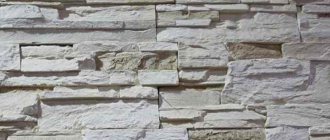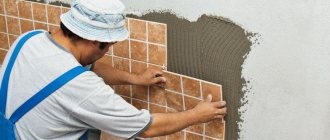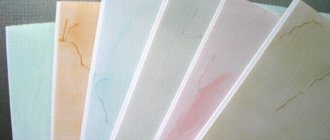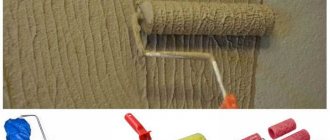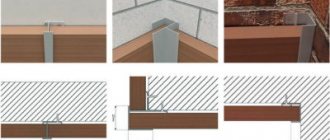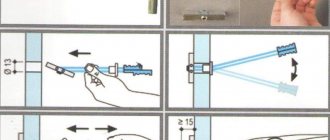Drilling into concrete walls occurs in every home from time to time, for example when you need to hang a lightweight object. The work is usually done with a conventional drill, but in order to use it correctly, you need to know the technique and certain rules. How to drill through a concrete wall with a regular drill? This is discussed in detail below.
A conventional drill allows you to drill a hole of the required length and diameter
Features of working with concrete pavement
First of all, it is important to choose the right drill. A pobedit nozzle is suitable for working with concrete. However, it is not suitable for drilling other surfaces; for example, it tears wood, resulting in sloppy holes.
When drilling, a lot of dust is generated, so you should prepare a vacuum cleaner to collect small particles. Of course, this technique will not ensure perfect cleanliness after repair work, however, it can reduce the amount of dust.
After completing the preparatory activities, you can begin to work. So, how to drill a hole in concrete with a drill correctly? First you need to determine the place where the future recess will be. The mark is made with a pencil.
You need to start using the device at low speed, gradually increasing it. This rule will improve the accuracy of the procedure. To make the hole the right size, the drill must enter the concrete wall at one angle, without wobbling.
Important! If you are making a hole for a cornice or TV, then you should use reliable fasteners, for example, an anchor, since it can withstand heavy loads.
During the drilling process, concrete crumbles, so you need to use the device at low speeds
Drilling chipboard and wood
1. Selecting a drill. Holes less than 10-12 mm in diameter are usually made with a metal drill. Special drills for wood need to be purchased only when the hole diameter is large enough, or when high demands are placed on the quality of work.
Wood drills come in several types:
- spiral;
- single-stranded (twisted);
- ring (crowns);
- feathers;
- Forstner cylindrical drills.
If transverse drilling is performed, use a center drill, and if longitudinal, use a spiral drill.
Above is a spiral drill, below is a twisted wood drill.
Above are feather drills, below are Forstner drills for wood and chipboard.
Various versions of crowns for drilling large holes in wood.
2. Surface preparation. A recess is made in the middle of the hole using an awl to prevent the drill from slipping. To prevent chipping after the tool comes out, a block is placed on the back side of the board.
3. Drilling process. Perform work at low or medium speeds. Chipboard has a particularly fragile structure, so to avoid peeling of the coating, drills with sharp edges are used, and a block is placed under the base.
How to drill concrete walls
It is quite difficult to make a hole in concrete, since when drilling you come across crushed stone, which interferes with the operation of the tool. You can drill through a concrete wall using several devices:
- perforator;
- electric drill;
- powerful screwdriver;
- ordinary drill.
The selection of tools largely depends on the purpose of the area. For home use, a regular drill is best suited. It is recommended to choose an impact tool, since a non-impact tool will deteriorate with prolonged use.
Before drilling into a concrete wall with a drill, the worker should choose a reliable attachment, since the whole process depends on it.
Choosing the right tool attachment makes your job much easier
Diamond drills and other devices
Diamond core bits are suitable for hammerless drilling in concrete. When using them, you can drill a hole of the desired diameter without applying additional effort.
The drills have shaped cutouts and an abrasive structure on the edge. The worker just has to choose the correct length of the nozzle. So, for small household work, drills with a maximum diameter of 120 mm are used.
Using crowns for drilling concrete walls using a drill
The most popular are diamond and carbide crowns, the diameter of which is 68 mm. When starting work, you should consider the following features:
- use the unit only in the place where it is required by the Electrical Installation Rules;
- After finishing the work, it is necessary to remove the concrete dust that remains inside the hole using a chisel and a hammer or a hammer drill.
If carbide products are used for drilling, then you need to take short breaks so that the device has time to cool down. Otherwise, it will quickly lose its functions.
If crowns with a large diameter (more than 100 mm) are used, the following should be considered:
- it is strictly forbidden to put excessive pressure on the tool, as this will cause breakage or overheating;
- When working on reinforced concrete, wet cooling cannot be used;
- Before turning on the device, you need to check the reliability of fixation of the product in the unit socket.
Important! Before drilling into concrete with a conventional drill, the worker must wear protective equipment to avoid injury.
For drilling, it is best to choose diamond drills
Drilling metal
1. Selecting a drill. To make a neat hole in a metal surface, you should purchase a high-quality metal drill. In this case, you should not use cheap drills, since they will not only not drill through the base, but will also cause a lot of trouble. Therefore, try to buy only proven, high-quality drills from well-known manufacturers. The normal price for a good drill is about 300 rubles.
Types of drills and bits for metal.
2. Surface preparation. Before drilling metal, it is necessary to punch the middle of the hole so that the drill does not slip off the surface. This work is performed using a center punch, which is a pointed metal rod. The center punch is hit with a hammer, and its tip knocks out a notch in the surface. Thanks to this, the drill can be fixed in one position, and the hole will be correct and neat.
3. Drilling process. To make a hole in metal whose thickness exceeds 5 mm, it is advisable to use several drills. First, the work is performed with a drill with a small diameter, and then drilled with a large drill to the desired diameter. First, turn on the drill at low speeds, then increase the speed slightly.
To make drilling metal easier, it is advisable to place a board under it. This will make the holes smoother and neater.
When metal is being processed, the drill becomes hot. It is advisable to lubricate it with a special paste or coolant before work. If you don't have it, regular machine oil will do. The exception to this rule is gray cast iron, which is always dry drilled.
To remove the drill from the resulting hole, you need to turn the drill in the opposite direction, if its mechanism has such a function.
Often, for drilling metal, a drill stand is used, to which the tool is attached. In this case, at the beginning of work, it is necessary to press its handle only lightly, and when chips start to flow, the pressure should be increased.
Drill installed in a drill stand.
There is a direct relationship between the thickness of the drill and the number of revolutions of the tool. Remember that the larger the diameter of the drill, the lower the speed. Let's say if you use a drill 4 mm in diameter, the tool speed is about 2400-2800 per minute. If the drill diameter is 6-8 mm, the number of revolutions is much lower - approximately 1200-1300 per minute.
Video: Drilling hardened steel
Surface preparation
Before operating the device, you need to check whether there are any communications on the area of the selected surface. If you neglect this rule, you can damage the electrical wiring or the place where the pipe passes. A metal detector will help the worker cope with this task, since when it detects non-ferrous metals, iron or steel, it gives a specific signal.
If the selected section of the concrete wall meets all the requirements, then you need to mark a point and then begin operating the device.
Important! The surface of the wall is looser than subsequent layers.
The intended drilling location should be marked with a pencil.
Drill selection
The decisive step is the choice of drill, since the quality and integrity of the nozzle depends on it. Construction stores offer a wide range of drills that are suitable for a specific type of material.
Concrete drills have a triangular tip shape and are made of carbide. Experienced repairmen recommend using a pobedit drill as it does not tear the material.
If the drill becomes stuck, you will need to use a punch. After installing the device in the hole, you need to hit it with a hammer several times so that the impassable area softens.
Also, many people who carry out minor repairs are interested in the question of whether it is possible to drill concrete with an impact drill. So, if difficulties arise at the drilling stage, then holes can be drilled using impact mode or a hammer drill. However, the latter has a significant drawback - it forms holes with a diameter of at least 13 mm.
To make several holes, soldering on the nozzle is used:
- pobedite tip;
- universal drills - they need to be cooled regularly;
- Diamond drills are a very expensive material, but they can last for several years.
During operation, it is important to ensure that there is no sound of contact with metal. If the drill hits a reinforced concrete block, you need to complete the procedure before the bit becomes dull.
Correctly drilling a concrete wall with reinforcement can be done in several stages:
- Make a hole up to the metal layer with a pobedit tip.
- Place a metal drill and continue operating the device.
If it was not possible to make a hole in concrete with a conventional drill, you should use a hammer drill
Practical advice from experts
To ensure that the drilling process goes without incident, you should take on board some useful tips from experienced craftsmen:
- For a hole for a dowel, you need to make a recess larger than its length.
- You need to start the process with low speeds so that the nozzle fits clearly into the hole and does not wobble, causing unnecessary inconvenience to the worker. When the hole is of sufficient length, the number of revolutions can be increased or the drill can be put into impact mode.
- With prolonged use, the chuck begins to hold drills worse, so it should be changed regularly. If you do not replace it in a timely manner, it will be very difficult to drill through concrete.
- It is necessary to moisten the drill with cold water to avoid destruction of the nozzle.
- Since concrete dust is generated during drilling, the work can only be carried out using glasses.
- To reduce the amount of dust, place a plastic cup on the drill.
- If you need to drill a hole through a ceramic material, which is often used for wall decoration, then the movements should be performed smoothly so as not to split it.
Compliance with safety precautions is the main condition when using the tool.
The need to drill a concrete wall arises when carrying out cosmetic repairs, for example, if a curtain, shelf or picture is installed. If you choose a site in a concrete wall wisely and follow safety precautions, both a woman and a man will be able to drill a hole, even without experience.
Expert's comments
Now you know how and with what help to make a hole in the wall, but if you do not have experience in such work, first ask one of your more experienced friends to teach you how to use the equipment, otherwise the walls and the tool may become much less functional than they were before the work began.
Also remember that even though our grandfathers and great-grandfathers were able to carry out repair work of any kind and complexity with the help of one hammer, you and I still live in peacetime, when there is no shortage of tools. Therefore, if you decide to get a hole in the wall, but you only have a low-power drill at hand without a hammer function, you shouldn’t torture the walls and the device, but it’s better to wait a little and ask your friends about the presence of a hammer drill - you’ll probably be lucky. Oh yes, if you live in an apartment building and you are familiar with such a nuisance as having neighbors, then be merciful to them and do not start your drill exercises with the first roosters - they will be grateful to you.
